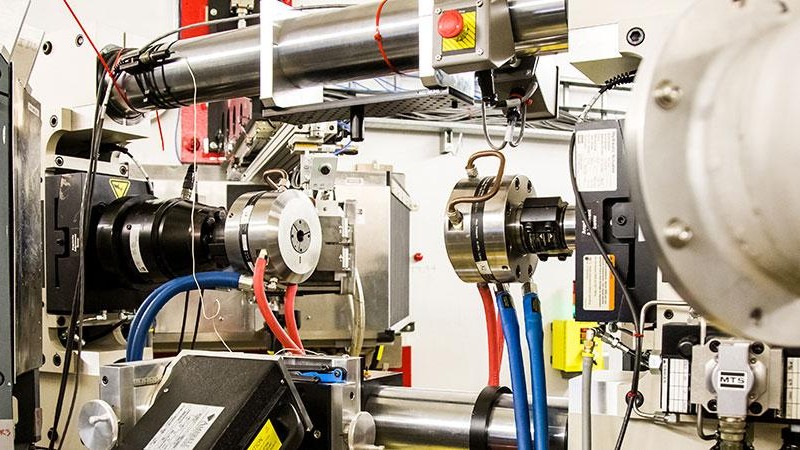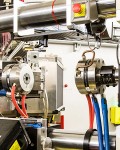More than 150 researchers from several countries participated in a workshop held at the Spallation Neutron Source (SNS) at Oak Ridge National Laboratory (ORNL) to mark the completion of the VULCAN engineering diffractometer.
"VULCAN will enable scientists and engineers to test the reliability of full-size structural components and gain insight into how materials deform at atomistic level," said Xun-Li Wang, lead scientist for the instrument. It is designed to investigate problems ranging from determining residual stress in engineering components to understanding fundamental aspects of materials behaviors during their processing and in use.
“VULCAN will be at the interface bridging basic and applied sciences,” ORNL Director Thom Mason remarked in his address to the workshop participants.
The Canada Foundation for Innovation provided funding for the construction of VULCAN, and McMaster University in Hamilton, Ontario, administered the project. The U.S. National Science Foundation (NSF) provided additional funds through the University of Tennessee to support unique sample environments, and the U.S. Department of Energy’s Office of Energy Efficiency and Renewable Energy funded additional detectors. The instrument received its first neutrons in June of 2009.
The workshop, held in January, featured two days of presentations by researchers summarizing the status of the research field and identifying science problems on which VULCAN is expected to make an impact. Brain-storming sessions allowed participants to provide feedback on new capabilities needed for VULCAN, access to the instrument, and scientific and industrial uses.
“Part of the workshop is to celebrate where we’ve gotten to, but part of it is to continue to make detailed plans as to how now to best extract the science from it,” said Bruce Gaulin, holder of the Brockhouse Chair in Physics at McMaster. “All projects like this evolve from a construction phase to a science phase, and we’re right at this juncture. It’s right on the cusp of producing great science and engineering.”
The workshop was an international event with speakers from six countries—Canada, Germany, Hungary, Japan, the United Kingdom, and the United States.
Jac van Beek, Vice President of Programs and Planning of the Canada Foundation for Innovation, commented that the workshop, with its mix of researchers from around the world, “looks like the United Nations. I find that really exciting . . . to come to a place like this and see this kind of scientific population interacting and talking with each other. That means you are getting the best.”
Fiona McNeill, Associate Vice President for Research and International Affairs at Canada’s McMaster University, noted that the VULCAN collaboration represents “a great opportunity for McMaster’s students and the training of the next generation of scientists. That they can come into this truly international community and work with world leaders in this area means we can be assured that this next generation of Canadian scientists truly are at the leading edge.”
The power of VULCAN is that it offers sufficient beam intensity for analyzing full-size specimens instead of small material samples, said Cev Noyan of Columbia University, one of the presenters. “The world is made out of large things—bridge components, jet turbines, reciprocating engines. All these things can fit in the instrument and we can measure real samples as opposed to miniature things as stand-ins.”
Anke Kaysser-Pyzalla, scientific director and chief executive of the Helmholtz Centre for Materials and Energy in Berlin, said VULCAN will be exceptional for addressing materials engineering science issues such as how cavity damage originates and develops, and fatigue under loading. “We now have the ability to take data from large samples and we will be able to get results that are comparable to what happens in the real component.”
Although VULCAN is not yet optimized, it will be available on a limited basis in the next SNS beam cycle. Beam time proposals are due by March 3, 2010. For more information, see http://neutrons.ornl.gov/users/proposals.shtml .
Sponsors of the VULCAN workshop were NSF, the Joint Institute for Neutron Sciences (a collaboration between Oak Ridge National Laboratory and the state of Tennessee), MTS Systems Corporation, and Bruker AXS.






